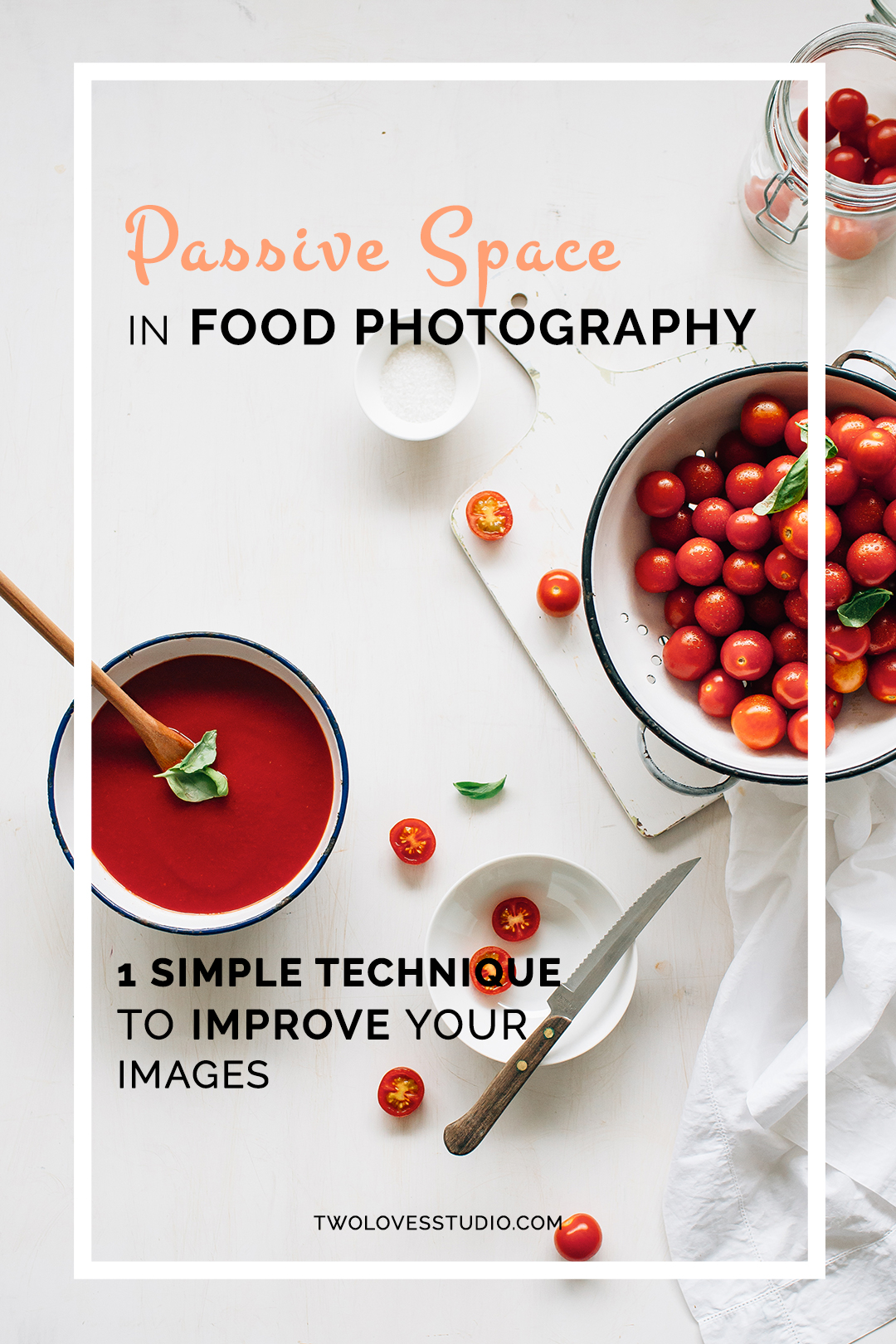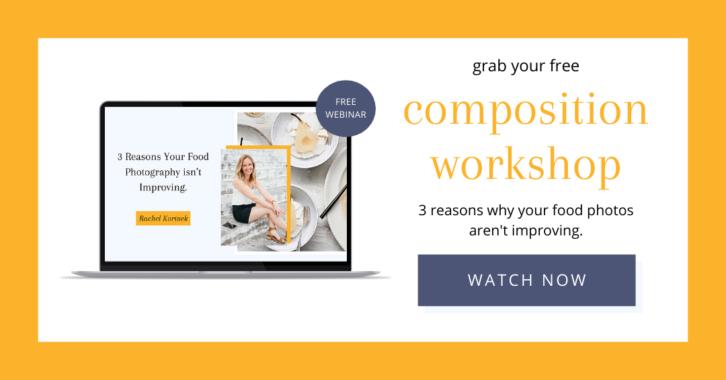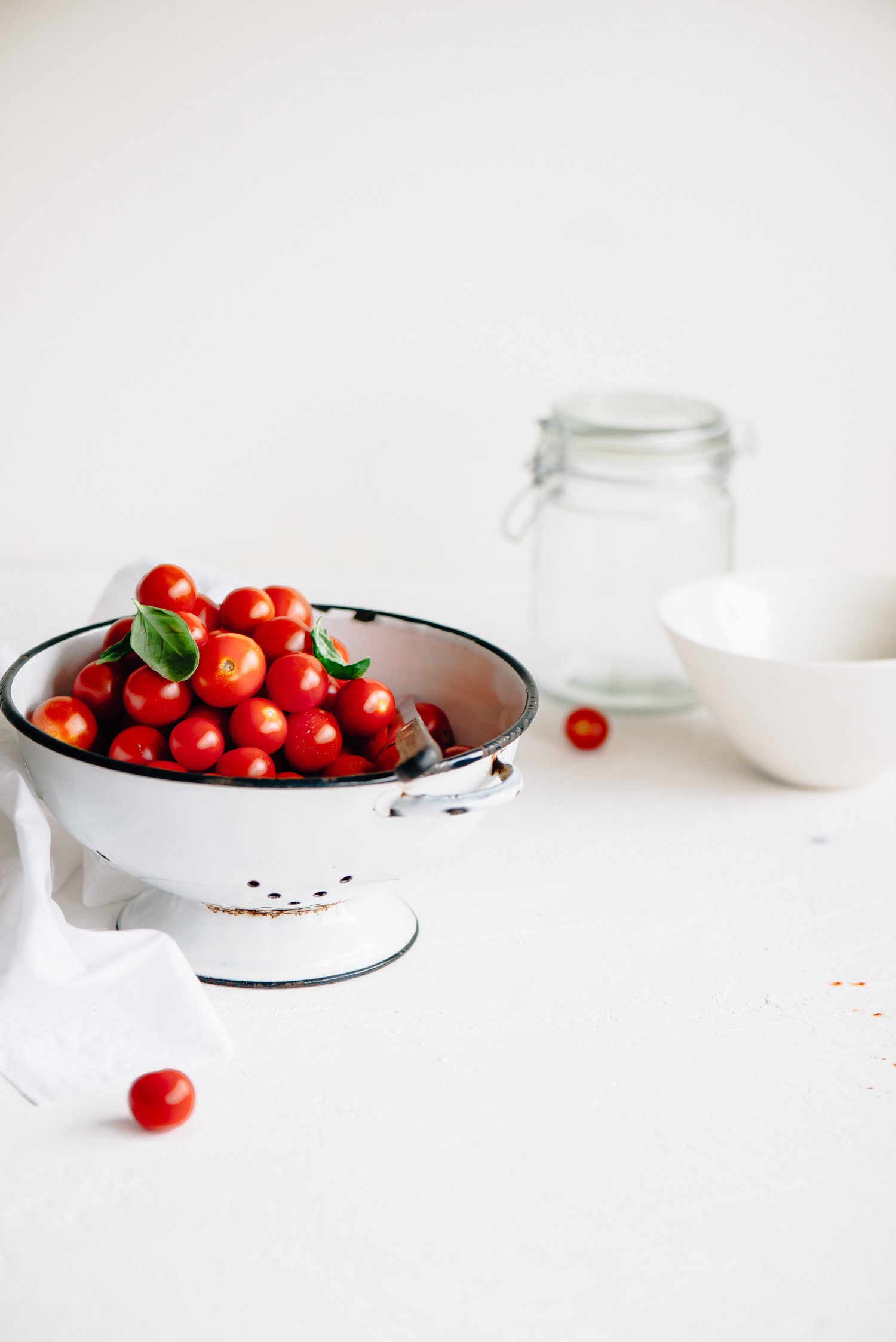It is our experiences and fond memories with food that strengthens our connection to food photography.
However, in order for the connection to be truly moving or inspiring, it is those subtle yet powerful concepts of design and composition in photography that really have us hooked.
No, it’s not all just about the food.
My style of food photography takes a bold and clean approach, whereby the focus is on the main subject and the intricacies and beauty of the food itself.
Negative space is a technique that I actively use (and love) to not only make the main subject stand out, but to create an appealing image in my work.
Yet, I use negative space in a completely different way in food photography to how I’d use it in say my travel or landscape photography. Let’s take a look at what I mean by that.

Passive Space in Food Photography.
As food stories (foraging, preparation, cooking and eating) occur in very agreed upon places (homes, kitchens, restaurants, farms, gatherings), food photography relies on these ‘agreed-upon’ elements to create a food scene to convey a story about the dish itself.
An empty space can sometimes be a little too abstract and not send the intended message. The space, in my opinion, doesn’t have to be bare or empty to generate the feeling of negative space in food photography.
Therefore I like to use a technique I am defining as Passive Space. It has a similar conceptual outcome, yet allows for the emotional connection of a food scene.
Passive Space, akin to negative space, being the ‘inactive’ space around your main subject. Inactive meaning a space that is not talking part in competing with the main subject in size, shape, colour or contrast etc, but rather complimenting it in the most subtle of ways.
Rachel Korinek
Passive Space in food photography could be something as simple as a linen or bowl placed within the shot that isn’t distracting.
Here I have used a plain bowl, linen and cutting board that matches the colour of the background and an empty, clear jar.
Although they don’t seem to add much except an ‘outline’ within the shot, your brain immediately can tell that they are pieces associated with the overall subject and allows you to keep focus on the shape; colours and textures of the hero in the shot, our subject – the cherry tomatoes.

Creating Passive Space in Food Photography.
Now this isn’t to say that negative space doesn’t have a place in food photography, or one is better than the other, but rather to get you thinking about how creative elements can interact differently between styles of photography – specifically food photography.
When you next set up a food shoot and want to utilise the visual power of negative space, yet still draw in the viewers emotional connection via props and food elements, think about this idea of Passive Space.
To create a shot that is a little more interesting and powerful, try using these examples or ideas to create something bold and clean!
Examples and Ideas:
Neutral linens, or ruffled/crumbled linen background to add some texture but stay passive in the shot
Neutral or white plates, bowls
Clear glasses/glass jars. You can even add water to add a little interest
Shadows from props sitting just outside the frame
Neutral placements/cutting boards/trays/paper or even newspaper that isn’t too text heavy
A textured background (if shooting straight on or similar angle) that will add interest when blurred at large apertures
Edges or corners of tables, benches or the background you’re shooting on if possible




Karene
This is such a wonderful way of putting it! It’s in the subtlety of your additional props. That’s what creates the sense of quiet, in your photos, without being too stark or clinical. It’s a wonderful observation – so when we’re aware of it we can choose to create something busy or calm, by the amount of passive space we use, and be fully in control of what we intend to do. I like that. I find I crop too tightly and I constantly have to remind myself to pull back and allow for breathing space, but what goes in that breathing space is important too. Thank you for sharing this!!! You’ve switched on a lightbulb!
Susan
Agree with Karene. Totally ‘got’ the subtle difference between negative space and passive space. Love the idea of props playing a pared back role that compliments rather than competes with the main focus. Thanks so much!
Lauren
Beautiful concept! I adore negative space and use it all the time. It’s a concept I love teaching my beginner students too, although they are always reluctant to embrace it. The idea of passive space is just as powerful as negative space to enhance the subject and draw the viewer’s eye to the visual weight in the scene. There’s a tension created, but it’s the good kind, the kind that comes from your viewer wanting to absorb the entire scene to learn the whole of the story. I love it!
Rachel Jane
Wow Lauren, that is such a beautiful response. I really feel this is something important in food photography to really create that emotion and story that a food scene craves. I really do see that beginners are reluctant to embrace it, and it’s so funny cause once you do I think maybe it can be over used (if that is even possible!). Maybe not over used, but becomes a staple design technique.
Jonathan Thompson
What a wonderful post. I love the way you describe how you see. It makes it clear to us, your readers, how and why you shoot this way. Giving us a better understanding and clearer way to apply it to our own work, in whichever way we want to.
I can feel the energy and love you put towards your photography. It’s evident to see for me, but to have it backed up by your delightful and descriptive written word, brings a bit of your magic to wherever we happen to be reading this. When someone describes their why and it’s so similar, but distinctly unique from my own, I take a deep breath in, and it’s crisp, spring morning air to me. Someone else gets it… Oh dear lord thank you 🙂
Rachel Jane
Thank you Jonathan! Sometimes (as the writer) you know exactly what you mean, but to convey that to others in words that motivate them is truly an achievement. I think it is really great to have different perspectives and takes on things. Keeps it fresh and inspiring. It is really nice to have you here and thank for your contribution!
Moya
Thank you for sharing your valuable information and your inspiring photography 🙂
Rachel
Oh you’re welcome Moya! Glad to have you along for the ride.
Salma
Thanks for sharing your wisdom Rachel. I feel that I often struggle with food styling as I’m usually too excited to fill my scene with so many props. I really like this concept of passive space that you discuss and look toward to embracing it to take my photography to the next level.
Rachel
Hey Salma! Not such a bad thing you know. Getting excited for your craft is something we shouldn’t take for granted (I definitely have done this often!). Glad you like this concept. I think it will work really well to bridge that gap for you. Let me know what you come up with!
Priya
Nicely clearly explained article..thanks a lot for sharing..
Rachel
You’re welcome Priya – it’s a simple yet powerful technique 🙂
Tanja
You have such beautiful pictures:) I wait so much to learn more about your tricks about food photography.
Thank you for sharing all the tricks you have!
Sonia
The way you use negative space and your styling technique is probably the first thing that got me glued to your site! It’s so unique and it definitely is one of my food photography learning goals 🙂
Rachel
Oh that is so sweet! I love Negative space, it’s such a great technique.
Ekarin Yusuksomboon
Dear Rachel
Thank for your conceptual ideas,
That s great for my current job as food stylist in Bangkok and also easy to explain to my students in my master class. You are so thrilled
Ekarin